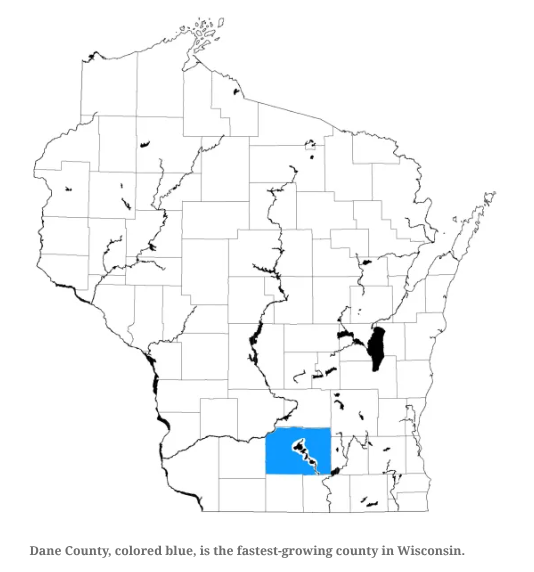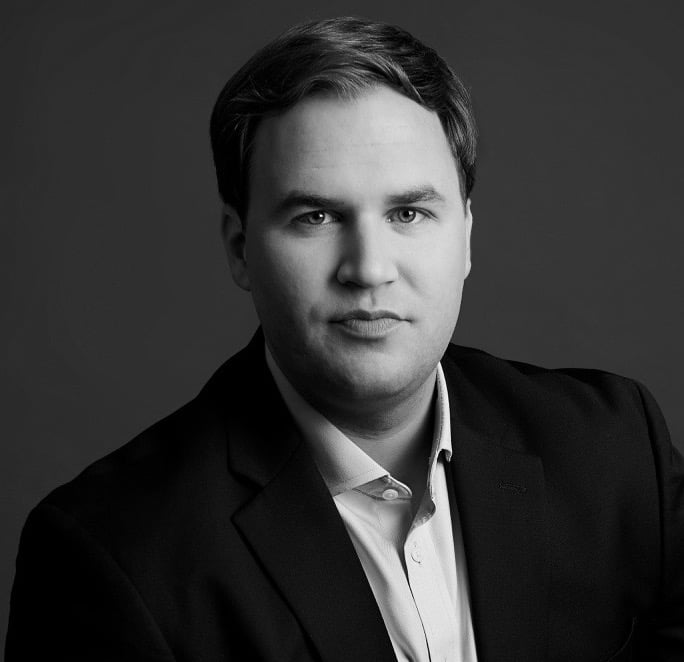Updated on May 14th, 2025
Despite massive turnout gains, conservatives lost the Court—proof that the left’s permanent campaign strategy is outpacing old models.
What to Know:
- Brad Schimel earned over 1 million votes, the most ever for a conservative in a Wisconsin Supreme Court race.
- Susan Crawford won 86% of the Kamala Harris vote in key municipalities.
- WFA warned Crawford’s Planned Parenthood ties threaten life, religious liberty, and parental rights.
- Hunter Nation and Restoration of America urged conservatives to organize year-round, not just before elections.
- Liberal donors poured over $59 million into the race to help elect Crawford.
On April 2, 2025, conservatives in Wisconsin faced a hard reality: despite record-breaking turnout and historic gains among Christian voters, liberal candidate Susan Crawford defeated former Attorney General Brad Schimel in the race for Wisconsin’s Supreme Court. The result maintained a 4-3 liberal majority on the Court — and delivered a clear warning to the conservative movement: good enough is no longer good enough.
Susan Crawford; photo found on Newsbreak
As organizations like Restoration of America, Hunter Nation, and Wisconsin Family Action (WFA) assess the election aftermath, one message is emerging loud and clear: if conservatives want to reclaim Wisconsin, they must abandon the outdated "election season" mindset and instead embrace a permanent campaign strategy.
Key Lessons from April’s Election Battlefront
Conservatives had every reason to hope for a win. Brad Schimel garnered over 400,000 more votes than the last conservative Supreme Court winner in 2019. He even outperformed Justice Daniel Kelly’s 2023 total by more than 200,000 votes, and edged out liberal Janet Protasiewicz’s record-setting 2023 numbers. In short, Schimel ran the best race a conservative has ever run for the Wisconsin Supreme Court — and still lost.
Meanwhile, liberal challenger Susan Crawford shattered turnout expectations. She mobilized Democrats to nearly midterm-level engagement. In several key municipalities, Crawford captured 86% of the Kamala Harris presidential vote. The left’s infrastructure — unions, campus operations, absentee ballot harvesting, and year-round voter engagement — delivered at an industrial scale.
In contrast, conservatives surged at the right time, but not at the same magnitude, and not early enough.
Wisconsin Family Action’s: Concerns About Crawford
In the wake of the 2025 Wisconsin Supreme Court election, Wisconsin Family Action (WFA) didn’t mince words. They warned that Susan Crawford’s victory poses a direct threat to parental rights, religious liberty, and unborn life in Wisconsin. In their March 18th statement, “The Sordid Truth About Susan Crawford,” WFA painted a stark picture of what’s at stake under Crawford’s influence on the Court.
WFA criticized Crawford’s long-standing ties to Planned Parenthood, her open support for abortion “through all nine months,” and her apparent endorsement of “gender transition” medical practices for minors, citing her alignment with the national Planned Parenthood platform.
The organization also raised alarm over Crawford’s connections to extreme ideological circles, including a drag fundraiser event backed by LGBTQ+ activists and the implicit support of far-left figures like Senator Bernie Sanders. These associations, WFA argued, reflect Crawford’s disconnect from the values of most Wisconsin families.
On education, WFA spotlighted Crawford’s potential threat to school choice and homeschooling. They noted that her husband co-authored a book critical of homeschooling, calling it a “controversial practice” and pushing for constitutional litigation to curb it. WFA questioned whether such views would influence Crawford’s future rulings on parental rights.
Religious liberty, too, was central in their critique. Crawford’s endorsement by the Freedom From Religion Foundation — a group known for opposing public expressions of faith — raised concerns for WFA about potential hostility to religious counselors, chaplaincy programs, and faith-based institutions under a liberal-majority court.
Finally, WFA pointed to the unprecedented flood of out-of-state money that boosted Crawford’s campaign, citing more than $59 million in spending, with major donations from progressive figures like George Soros and Illinois Governor J.B. Pritzker. In their view, this was not just a judicial election—it was an ideological coup backed by national liberal interests.
In total, Crawford’s campaign held a direct spending edge of $8.9 million over Schimel. However, conservative-aligned outside groups—particularly those supported by Elon Musk and national donors—outspent liberal ones overall through independent expenditures, according to the Brennan Center’s analysis of total spending in the race.
WFA CEO Daniel Degner summed it up candidly:
“From a conservative, Christian perspective, it’s fair to say this election didn’t go in our favor… If history is any indicator, this court will hand down some decisions—and likely soon—on cases dealing with abortion, school choice, Act 10, religious freedom, our congressional district maps, and more.”
Hunter Nation: Building a Culture of Continuous Engagement
Hunter Nation, a national organization focused on protecting hunting rights and constitutional freedoms, responded to the 2025 Wisconsin Supreme Court election by emphasizing the need for sustained, year-round voter engagement. The group cited a structural disadvantage facing conservatives: a tendency to approach elections as short-term events rather than long-term commitments.
“We can't just show up for election day anymore,” said Hunter Nation CEO Keith Mark. “We must live election day every day. If we're serious about protecting our freedoms, we need to invest in voter registration, engagement, and mobilization all year long — not just in the final stretch.”
To support this strategy, Hunter Nation launched a $1.8 million hunter-focused voter activation campaign to help elect conservative Supreme Court candidate Brad Schimel. The campaign focused on engaging hunters, particularly blue-collar and working-class voters in rural areas, who are often classified as low-propensity voters — individuals who do not reliably turn out in non-presidential elections.
As part of this outreach effort, Hunter Nation partnered with a number of influencers and public figures to connect with voters on cultural and hunting-related issues. The campaign featured public support and appearances from NFL Hall of Famer Brett Favre, musician and hunting advocate Ted Nugent, Congressman Tom Tiffany, State Senator Mary Felzkowski, and Donald Trump Jr.. Hunter Nation emphasized that these voices were important in reaching hunting communities not typically mobilized by conventional political campaigns.
One issue the organization highlighted during the election was the status of the gray wolf under federal protections. According to Hunter Nation, the growing wolf population has contributed to the decline of the whitetail deer herd in Wisconsin and other Upper Midwest states, impacting both hunting participation and rural economies. The group’s “Delist the Gray Wolf” initiative calls for federal action to remove the species from the endangered list, thereby returning management authority to the states.
Hunter Nation’s stated goal is to maintain long-term engagement with hunters and rural voters in battleground states like Wisconsin and Michigan, focusing on policy issues that affect outdoor lifestyles, land access, and wildlife management. The group plans to continue its voter education and mobilization efforts beyond election cycles as part of what it calls a “permanent campaign” model.
Restoration of America: The "Permanent Campaign" is Here to Stay
Restoration of America, an organization dedicated to restoring common-sense American values, issued a powerful exposé following the Wisconsin elections. Their message was stark: conservatives need to reimagine their ground game to win future elections. While Crawford’s campaign directly outraised and outspent Schimel, the total spending from conservative-aligned third-party groups exceeded that of the left—yet turnout and infrastructure still fell short.
Hayden Ludwig, writing in Restoration News, put it this way:
"We didn't lose because Schimel lacked funding; we lost because national Republicans still fight today's battles with yesteryear's tactics."
Their article titled "Losing Wisconsin is Proof We Need the 'Permanent Campaign' to Win" explained that liberal groups have been relentlessly organizing, harvesting absentee ballots, and targeting micro-demographics every month, not just in the months before an election. As Ludwig emphasized in the article:
"We need a permanent campaign, a permanent ground game, and a permanent presence in the lives of conservative voters if we want to win."
They cite these critical factors:
- Absentee Voting Dominance: Liberals dominate absentee ballots, with Democrat-aligned groups mastering door-to-door collection and submission assistance.
- Campus and Urban Machine: Universities, nonprofits, and left-wing advocacy organizations operate sophisticated on-campus and inner-city voter operations year-round.
- Microtargeting Voters: Through advanced data mining and AI-driven targeting, liberals can turn out voters who would otherwise skip local elections.
In contrast, conservatives still largely rely on traditional "get-out-the-vote" (GOTV) efforts that peak two to three weeks before Election Day. It’s no longer enough.
Restoration of America bluntly concludes:
"We need a permanent campaign, a permanent ground game, and a permanent presence in the lives of conservative voters if we want to win."
Strategic Blueprints for Change
Conservative campaigns need to operate year-round. That means no more vanishing after November or April. Voter education, registration drives, and absentee ballot outreach must become permanent infrastructure, especially in overlooked suburban and rural regions where conservative values remain strong but participation often lags.
Ballot harvesting, where legal, can no longer be ignored. The left has systematized this tactic into a science. Restoration of America and Hunter Nation have both argued that conservatives must catch up—not through shortcuts, but by matching organizational intensity with legal and ethical precision. Ignoring this tool just hands an advantage to opponents.
Churches and religious communities offer untapped electoral power. Wisconsin Family Action’s outreach to 2,600 churches—resulting in over 1,000 congregations actively encouraging voter turnout—proved what’s possible. But this can’t be a one-off. Church-based mobilization should be built into the DNA of conservative operations moving forward.
Data and digital outreach are no longer optional. The left has developed a well-oiled machine for identifying micro-demographics, analyzing behavior, and tailoring messages with frightening accuracy. Conservatives need to invest not just in digital ads but in digital relationships—building real engagement over time through smart tech, strong messaging, and culturally relevant outreach. One model already being used effectively is by Hunter Nation, which combines voter engagement with cultural touchpoints—connecting with hunters on issues like outdoor heritage, wildlife management, and freedom. The result: motivated voters who see politics as personally relevant, not distant or abstract.
Wrap Up
If there’s one lesson from Wisconsin’s Supreme Court election, it’s that momentum and passion alone won’t win the day. Organization, persistence, and a “permanent campaign” mindset are essential. Conservative organizations like Wisconsin Family Action, Hunter Nation, and Restoration of America are sounding the alarm.
Wisconsin should be a turning point. Not because it was lost, but because it showed how close a win could be—and how much more is possible if the work starts now, not later. Winning future battles — in Wisconsin and beyond — will require adapting to the new reality: The left doesn’t sleep on election off-years. Neither can we.


